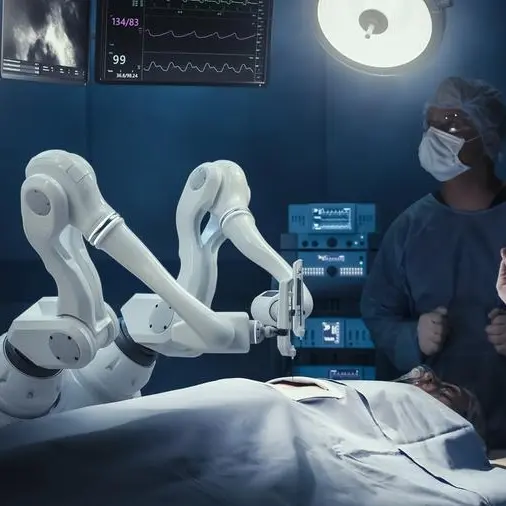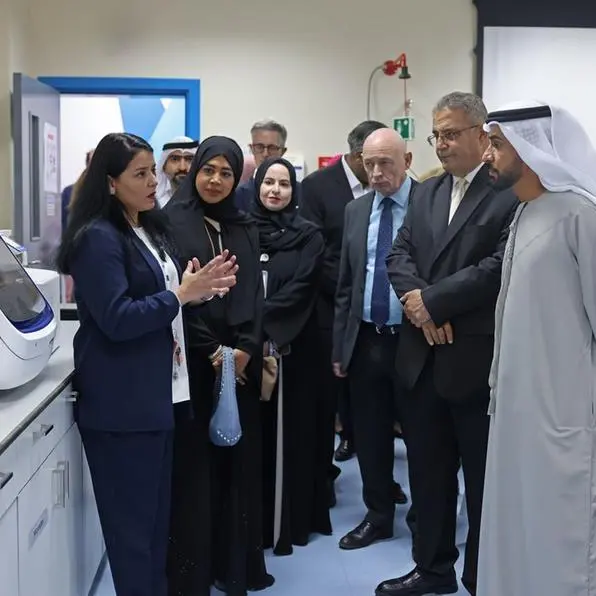PHOTO
A new technology using the combination of infrared lights and Moore’s Law could replace drugs to cure 90 per cent of diseases, including aggressive cancer, stroke and depression. That is according to Dr Mary Lou Jepsen, CEO, founder and chairwoman of OpenWater, a startup working on imaging tech to scan the body through holographic, infrared techniques.
Speaking at the Dubai Future Forum, the world’s largest gathering of futurists, Dr Jepsen said the software could be shrunk into something as small as your smartphone in the next 10 years.
“The implications of this technology are pretty profound,” she told Khaleej Times on the sidelines of the even. “Maybe the future of hospitals is that there would be no hospitals. It changes how we approach diseases and cure.”
According to Jepsen — who has been named Time’s 100 most influential people in the world — this new technology can be made possible by using semiconductors and super electronics.
“We have got 250,000 lasers in our smartphones,” she said. “We are using the next generation laser to measure blood flow better than a million-dollar MRI machine. We have worked very hard over five years on. Five years ago, that laser was the size of a room and cost $1 million. We shrunk it down to a diode and can put it into production.”
Clinical trial results
The new technology, which Jepsen admits is “bold”, has had encouraging results in clinical trials.
Inserting it into a wearable gear, the technology has managed to detect stroke faster than 10 hours. Stroke, which kills hundreds of thousands of patients worldwide every year, can be treated if its symptoms are recognised faster.
“We have proven that we can diagnose severe stroke in an ambulance,” she said. “We are doing this by using the highest sensitivity and specificity ever recorded in a mobile device.”
In the case of depression, patients have gone from severe depression to remission within just one week of getting 10 minutes of therapy with Openwater’s headset. The ongoing study at the University of Arizona has seen two-thirds of patients enter remission.
The device has also seen promising results treating Glioblastoma, an aggressive form of cancer.
“When we do a 10-minute treatment on the first day using very-low-intensity light and we get a massive reduction in tumour size,” she said. She said this has been made possible by using a technique called sonification, which targets only the cancer cells.
Jepsen said that 80 per cent of the cost of developing a new treatment is in clinical trials. However, Openwater had kept the costs for their trials up to 10 times lower by sharing safety data across several. .
Making the impossible possible
Jepsen, who started her career as a professor at Massachusetts Institute of Technology (MIT), is no stranger to turning impossible things possible.
A brain cancer survivor, she co-founded the One Laptop per Child (OLPC) movement which had the ambitious aim of producing laptop’s for just $100. Even though she was laughed out of several boardrooms, she made it a reality. As of 2013, millions of units have shipped to children in various parts of the world and its revenues have topped a billion dollars.
Jensen was later recruited to work at Google X where she reported to its former president Sergey Brin and then to Facebook and Occulus VR, where she led efforts to advance virtual and augmented reality. Seven years ago, she founded OpenWater in an effort to make healthcare cheaper and more accessible to people.
She is hopeful that she will find partners in the UAE, who will help her take her device into the production stage. “People think this is impossible,” she said. “But we are at the Museum of the Future, talking about how to impact the future. So, I am confident I will find someone here who will take this forward.”
Copyright © 2022 Khaleej Times. All Rights Reserved. Provided by SyndiGate Media Inc. (Syndigate.info).





















